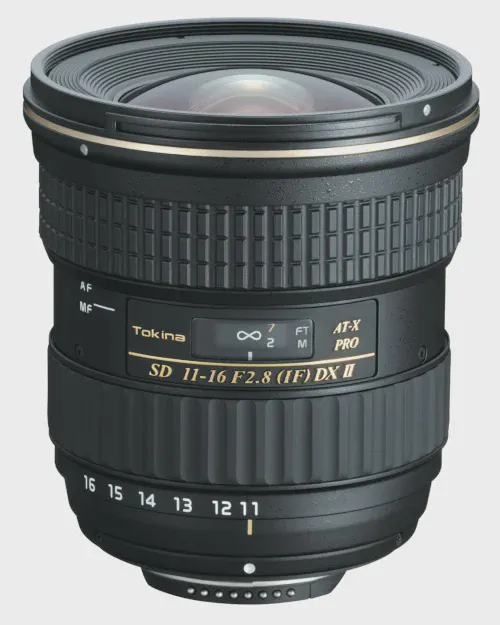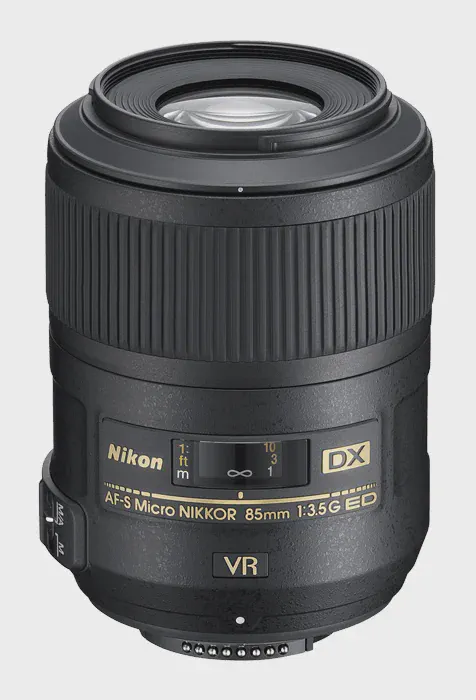Fun Affordable Lenses for the Nikon D3200
- Nathaniel Stephan
- May 11, 2025

Table of Contents
The Nikon D3200 uses F-mount lenses.
Nikon AF-S DX lenses are fully compatible.
DX lenses are designed for it’s APS-C sensor. Full frame, FX lenses, can also be used.
Some F-mount lenses will not work. Those include AF-P, D, and AF.
These recommended lenses will work with your D3200. There won’t be problems.
Feel free to skip the compatibility explanation.
I have picked lenses that and fun and under $200.
Nikon D3200 Memory Card Requirements
Nikon D3200 Lens Compatibility
The Nikon D3200 can use DX and FX lenses.
See the Nikon F-mount lens and compatibility page for a more detailed explanation.
DX lenses were designed for APS-C sensors, which the Nikon has.
FX lenses are for full frame cameras. Their only downside is that they are larger and more expensive.
Manual focus lenses will only work in manual mode. There is no linkage to let the Nikon know what the aperture is set to.
The Nikon does not have a built-in autofocus motor. AF and D-series lenses, from the 1980s and 90s, will not autofocus.
Compatbile:
- AF-S Lenses They have built-in Silent Wave Motors (SWM). They focus quickly and quietly.
- G Type: They do not have an aperture ring. There will be a ‘G’ after the aperture. For example, F1.8G.
Not compatible:
- AF-P Lenses These lenses feature a Pulse motor or stepping motor that makes autofocus even smoother and quieter than AF-S lenses. Unfortunately, they are not compatible with the Nikon D3200.
- AF & AF-D These lenses have autofocus, but the AF system needs to be driven by an in-body focus motor. The D3200 does not have a built-in focus motor, so AF will not work with these lenses.
Lens Abbreviations
These are some common abbreviations you’ll see on a lens.
- VR This stands for vibration reduction. It’s optical image stabilization. You will get sharper images with these lenses.
- ED - Extra low dispersion element(s), which are used to reduce chromatic aberration.
- IF - Internal focus. The front element won’t extend or rotate when focusing. The rotation will be an issue if you are using a circular polarizer.
- FL - The lens has fluorite lens elements.
- Micro - Nikon’s name for macro lenses.
- SWM - The lens has a silent wave motor.
Autofocus Not Working
Check the ‘A/M’ switch on the lens. ‘A’ is autofocus. ‘M’ is manual focus.
Affiliate Advertising Disclosure
Outside the Shot is a participant in the Amazon Services LLC Associates Program, an affiliate advertising program designed to provide a means for sites to earn advertising fees by advertising and linking to Amazon.com. As an eBay Partner, I may be compensated if you make a purchase. I also participate in affiliate advertising programs with KEH and Adorama. More can be found on the Affiliate Disclosure page.
Best Value - Nikon 18-55mm f/3.5-5.6G VR

There are 5 versions. The AF-P lenses will not work with the D3200.
- AF-S Nikkor 18-55mm f/3.5-5.6G VR DX
- AF-S Nikkor 18-55mm f/3.5-5.6G ED II DX
- AF-S Nikkor 18-55mm f/3.5-5.6G ED VR II
- Nikkor 18-55mm f/3.5-5.6G AF-P VR
- Nikkor 18-55mm f/3.5-5.6G AF-P
The 18-55mm focal range covers most types of photography. It’s good for everything from landscapes to general photography.
They’re small and light. It’s not going to be a chore to carry one around with you.
If you didn’t get one of these with your camera, I’d recommend one with VR. The optical image stabilization will help you get sharper images.
If you have a 18-55 without VR, don’t worry about upgrading.
See current price and information:
Sports, Action, & Wildlife Lenses
Nikon 55-200mm f/4-5.6G ED IF AF-S DX VR

The 55-200mm f4-5.6G is the least expensive entry point from action, sports, or wildlife photography. It’s going to have more reach, which is important for these types of photography.
Pay attention when buying one, because you want VR. It’s going to be helpful for getting sharp images when the lens is zoomed to 200mm.
The aperture isn’t very large. f5.6 will be difficult to use indoors. It may not let in enough light to get a good exposure.
It’s going to be great to use outdoors during the day. It can be easily hand held. You won’t need a tripod.
To freeze action, you’re going to need a fast shutter speed. Probably 1/500th of a second or faster.
See current price and information:
Nikon 55-300mm f/4.5-5.6G ED VR

Larger, heavier, and more expensive. That’s always the case with lenses that have more reach.
Without a doubt, it is going to be easier for birding than the 55-200mm. It’s also going to be better if you’re at one end of a sports field.
I would check on the prices of 70-300mm full frame lenses before buying it. That way you’ll have more flexibility if you ever decide to upgrade your D3200.
See current price and information:
Tamron 70-300mm f/4.0-5.6 Di LD

- Cheaper
- Still good becaues +100mm
- Harder to find
- Better price to performance
By giving up 15mm on the wide-end, you can save money.
Most people are going to use the lens at 300mm for the majority of their shooting. A bird will only let you get so close. Sidelines are a thing. Planes fly in the sky.
One big shortcoming is the lack of image stabilization. This means you’ll need to use fast shutter speeds to get sharp images. You want to prevent blur from camera shake.
See current price and information:
Best Prime
At these price points, primes are going to have better. Photos will be sharper and you’re less likely to experience chromatic aberration.
Shooting in low light will be easier. The larger aperture lets in more light. It’s less likely you’ll need to use a flash.
Nikon AF-S DX 35mm f/1.8G

- Same field of view as a 50mm on full frame.
- Fast aperture, good for low light.
- Small and light weight.
- Excellent value used.
This is my favorite field of view. It’s the first lens I would buy.
The fast aperture is helpful for shooting in low light. Conditions you’ll find indoors or at night.
It’s great for street, portraits, and general photography.
The small size and light weight make it easy to always have with you. You can leave it on the camera, so you can just grab it and go.
See current price and information:
Wide Angle Lenses for Landscape, Architecture, & Astro
Tokina 11-16mm f/2.8 AT-X116 Pro DX II

- Perfect for night photography
- Fast
- 77mm filter threads
- Focus clutch
The Tokina 11-16mm f/2.8 is fast and sharp. With a large aperture, this lens is an outstanding pick for astrophotography.
The focus clutch that controls changing between manual and autofocus is easy to use in the dark. To switch focus, the entire focus ring is either pushed forward or pulled back.
The autofocus motor is noisy and heavy.
Tokina made versions of the lens for different lens mounts. Make sure the lens is for Nikon. There are Canon EF and Sony A mount versions out there.
See current price and information:
Sigma 10-20mm f/3.5 EX DC HSM ELD SLD Aspherical

- It’s really wide
- Internal focus
- Can distort perspectives
The Sigma 10-20mm f/3.5 falls into the same price range as the Tokina 11-16mm f/2.8. It has a larger zoom range, but smaller maximum aperture.
You might be limited by what’s available. The F-mount has been discontinued for long enough that they can be hard to find.
Be careful. Make sure the one you buy uses the Nikon F lens mount. Sigma also made copies of the lens for other DSLR camera mounts including, Canon EF, Sony A, and Pentax K mounts.
See current price and information:
Portrait Lenses
Nikon AF-S Nikkor 85mm f/1.8G

- Best lens for portraits
- Internal focus
- Great image quality
- Easy to find (Thanks Z-mount!)
This was the go to portrait lens for Nikon DSLRs. It was the recommendation for photographers that wanted to take their photos to the next level.
It was one of Nikon’s best sellers. Now no one wants them, because everyone switched to Nikon’s mirrorless Z-mount.
As a result, they are a phenomenal value used.
The Nikon 85mm f/1.8G is one of the best Nikon portrait lenses every produced. It is a fast lens that delivers excellent images and pleasing bokeh due to the wide aperture.
The 85mm 1.8G is a full frame lens. You’ll notice two differences when comparing it against a DX lens.
First, full frame lenses are usually more expensive than DX lenses. They have larger lens elements, which translates to additional cost.
Second, the lens is larger than many DX lenses. While not a huge issue, if you plan to carry it around with another lens, you’ll definitely need a bag.
See current price and information:
Nikon AF-S FX Nikkor 50mm f/1.8G

- Cheap
- Small and light
- Great for low light
- Impossible to dislike
Taking crop factor into account, and this lens will have the equivalent field of view of 75mm on a full frame camera.
That’s perfect for portraits on a budget. The aperture is fast enough that you’ll be able to blur backgrounds and get beautiful bokeh.
If you ever plan on upgrading to a full frame Nikon DSLR, this would be my first lens recommendation.
See current price and information:
Macro & Close-Up Lenses
Nikon Micro-Nikkor 40mm f/2.8G

- Ideal for close-ups
- Can to 1x magnification
- Cheapest option with autofocus
The Nikon Micro-Nikkor 40mm f/2.8G is the best option for getting started with macro and close-up photography.
As far as modern macro lenses go, the lens is relatively inexpensive. It also has a high-quality autofocus motor and uses current optics, which makes getting macro shots fun and easier.
It is going to be great for food, products, insects, and capturing close detail. If you can’t focus close enough with other lenses, this is what you should get.
See current price and information:
Nikon AF-S DX Micro Nikkor 85mm f/3.5G ED VR

- Better for 1:1 macro
- Longer working distance
- More expensive
The largest benefit of the 85mm macro over the 40mm, is a longer working distance. That’s the distance from the front of the lens to the subject.
At 1X magnification, the front of the lens is going to be close to the subject. If you are trying to photograph an insect, this may cause them to try to get away.
Another issue could be properly lighting a subject. Depending on your light source it could be difficult to get it close enough to a subject.
See current price and information: